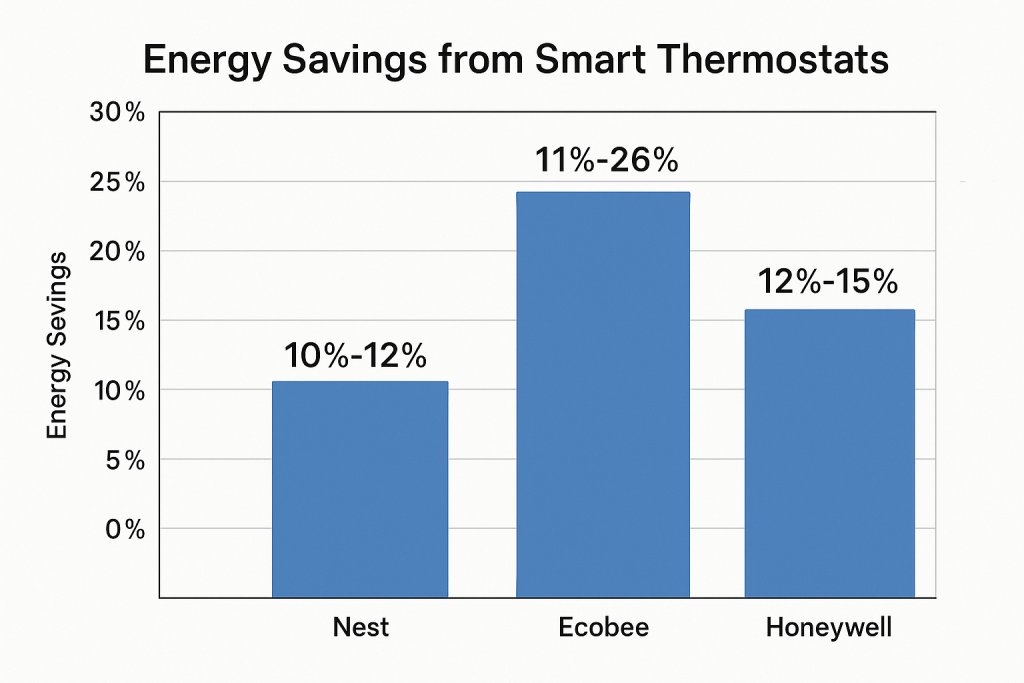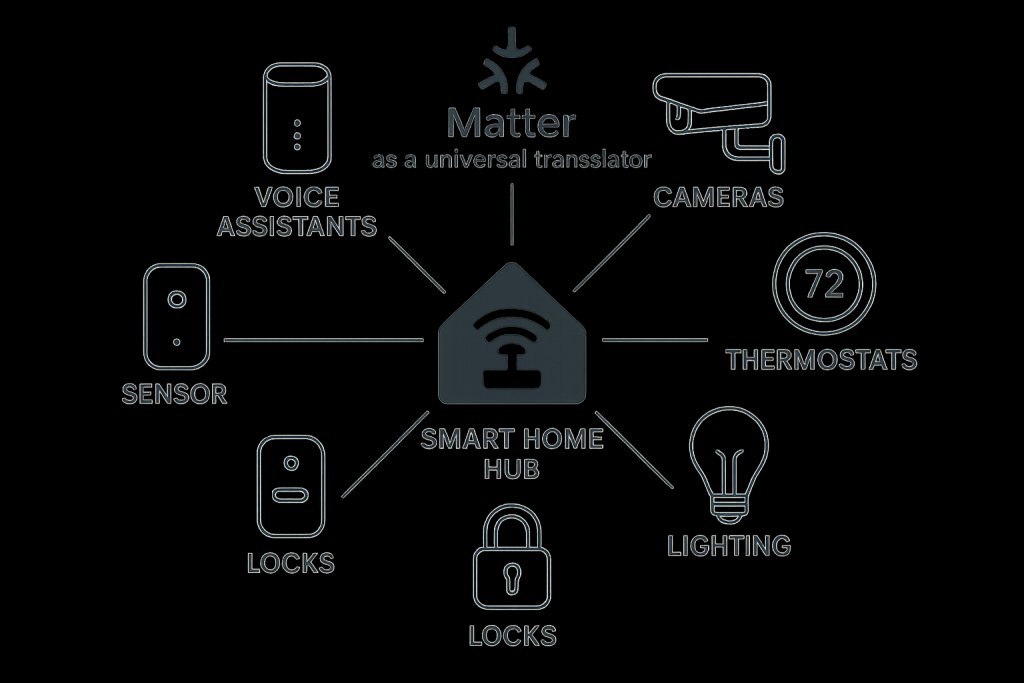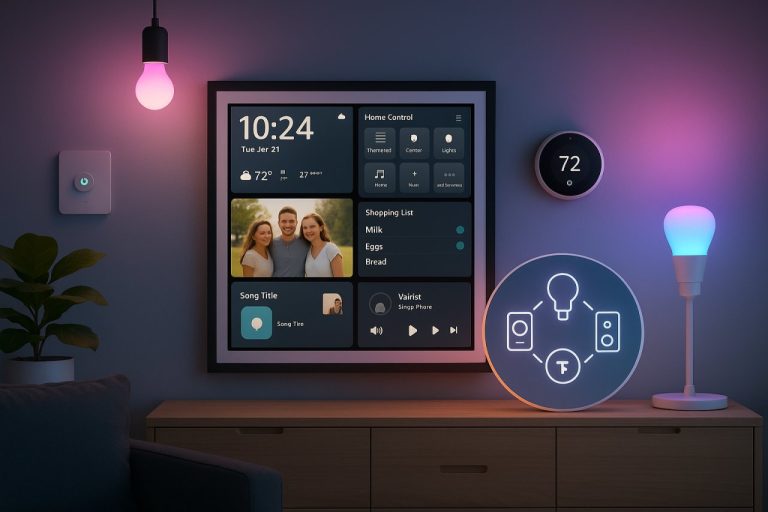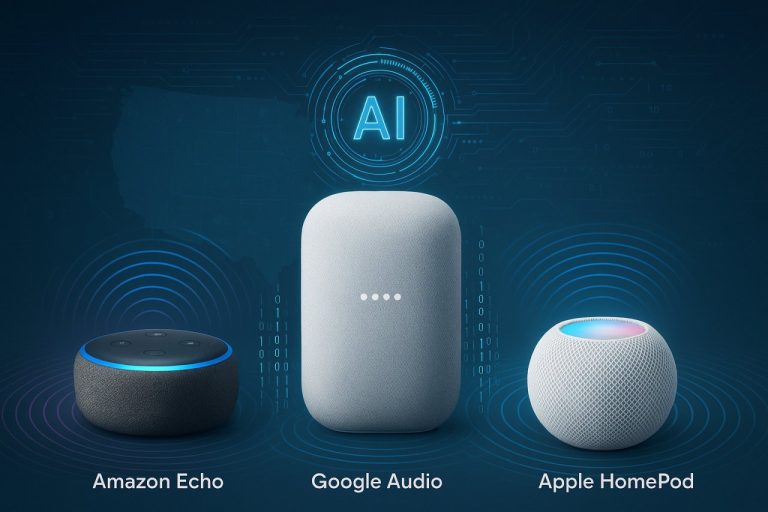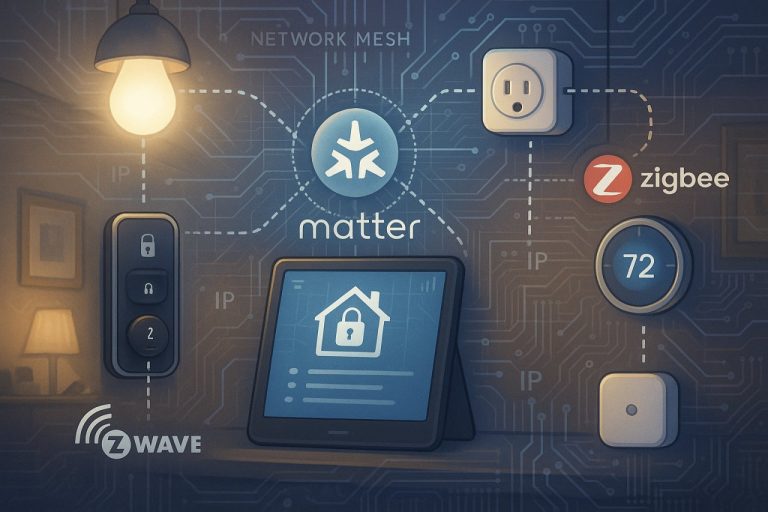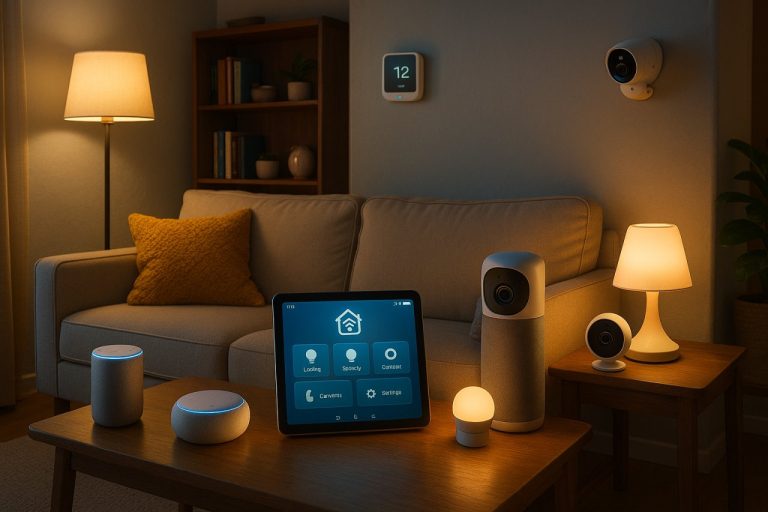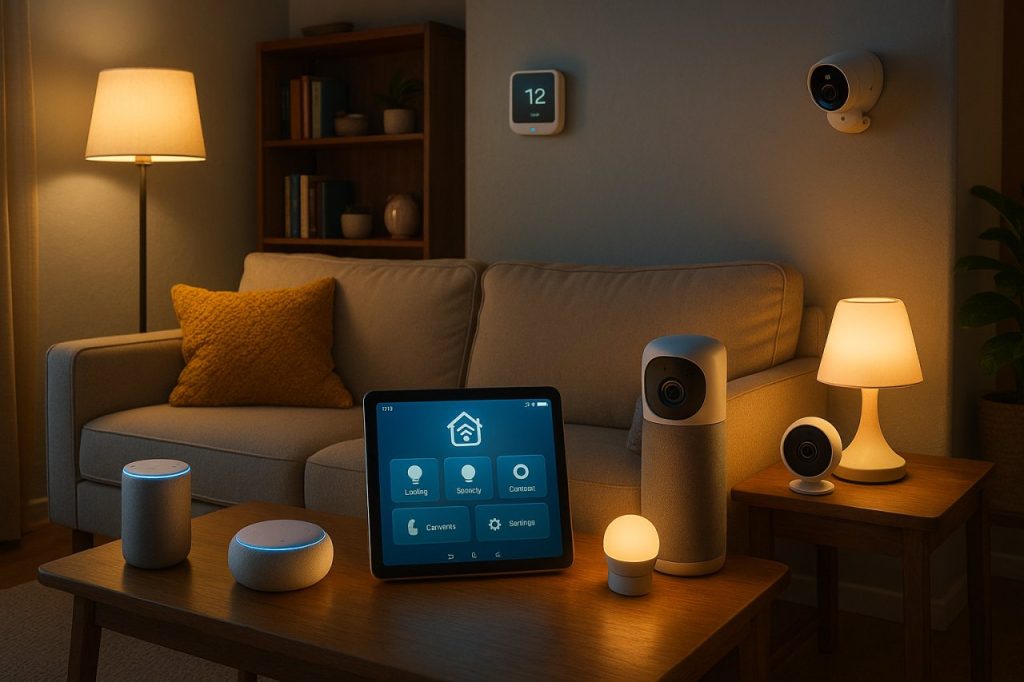
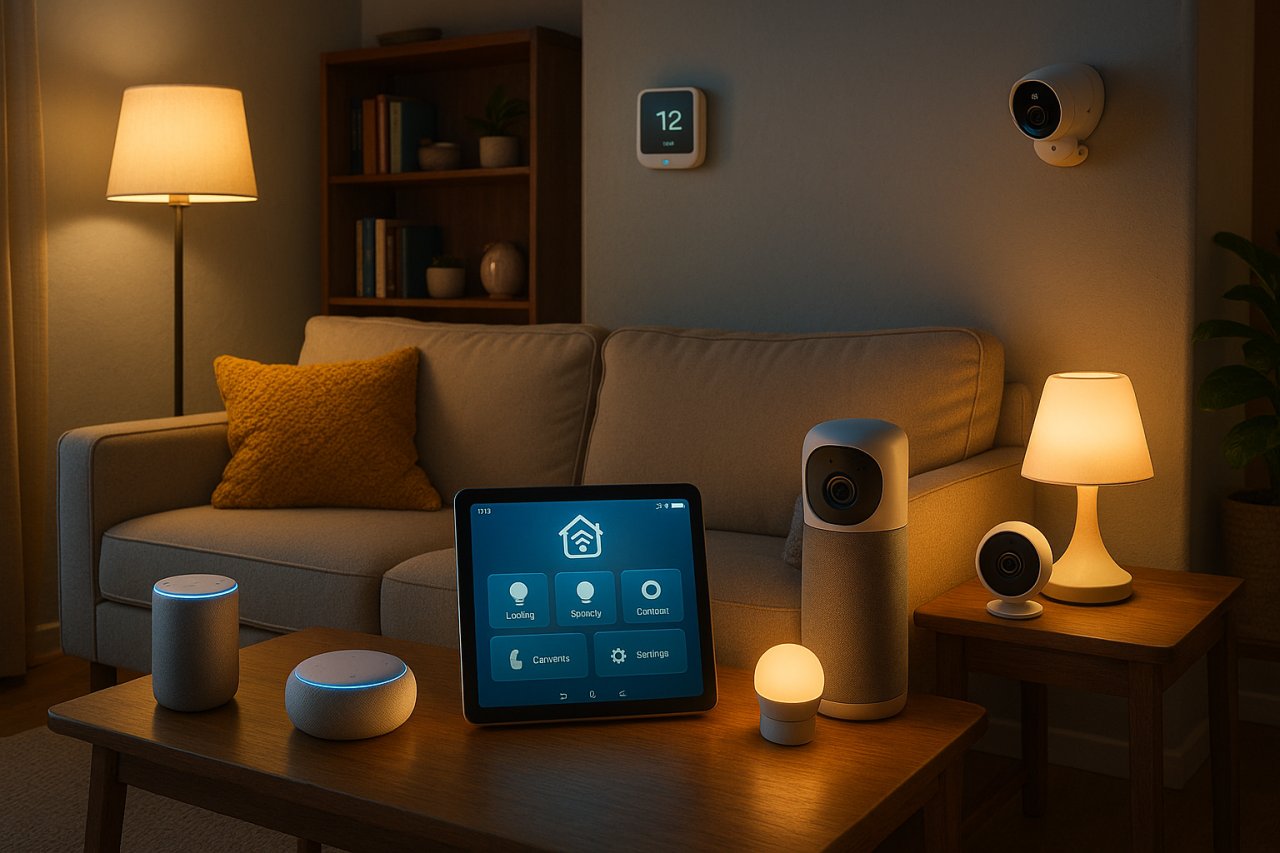
Complete Beginner’s Guide to Setting Up a Smart Home in 2025
I’ve been comparing notes with folks who, like me, started fiddling with smart home gear only to find themselves tangled in jargon, incompatible devices, and a parade of marketing buzzwords. Smart home technology in 2025 is no exception: it’s evolving fast, promising convenience and efficiency but often delivering confusion for newcomers. This guide aims to cut through the hype with an evidence-driven, yet accessible exploration of what it really takes to set up a smart home today. You’ll get a grounded overview of benefits, core components, device choices, installation tips, and some of the thornier privacy and security issues.
Given the recent surge in product launches and the growing adoption of standards like Matter, now is a particularly timely moment to get a handle on smart home basics — whether you’re upgrading from a few connected bulbs or starting from scratch. My hope is that this guide helps you avoid common pitfalls and make informed choices, especially if you’re eyeing those high-CPC IoT gadgets that advertisers love to push.
Why Build a Smart Home? Benefits and Realities
At a high level, the motivations behind building a smart home boil down to four main buckets: energy savings, security improvements, convenience, and future-proofing. But it’s worth being skeptical about the overhyped promises and recognizing the trade-offs involved.
Energy Efficiency and Cost Savings: What the Data Says
Smart thermostats and energy monitoring devices often headline the energy-saving pitch. According to CNET’s 2025 roundup, smart thermostats like Nest, Ecobee, and Honeywell can save between 10% and 15% on heating and cooling bills, with PCMag reporting that Ecobee’s premium model can push savings up to 26% in some cases[^1][^2]. Parks Associates notes that over 40% of US broadband households worry about their electricity bills, and more than 60% are interested in tools to monitor and reduce energy use[^3].
However, these savings come with caveats. Setup complexity, home insulation quality, and user behavior significantly affect outcomes. For example, a thermostat that learns your schedule only helps if you maintain consistent patterns. My own experience with an Ecobee unit involved several weeks of tweaking schedules and sensor placements before seeing noticeable savings — a reminder that the “set it and forget it” narrative is optimistic.
Security Enhancements and Privacy Considerations
Security is another strong motivator. The average value of property stolen during US residential burglaries is about $5,944[^4], and 71% of US adults are actively taking steps to prevent porch thefts[^5]. Smart security systems from ADT, SimpliSafe, Ring, and Vivint offer a spectrum from professionally monitored setups to DIY solutions. ADT tends to be pricier but offers superior customer service, whereas SimpliSafe appeals to budget-conscious DIYers[^6].
Privacy trade-offs are unavoidable. Cameras with cloud storage raise concerns about data handling and unauthorized access. Placement matters — I’ve learned the hard way that cameras overlooking neighbors’ yards can create awkward privacy issues. User reviews frequently mention false alarms and connectivity quirks, underscoring the importance of realistic expectations.
Does that seem reasonable?
Core Components: What You Need to Start
To build a functional smart home, you need a few essential building blocks:
- Smart Home Hub: The central coordinator that connects devices.
- Voice Assistants: For hands-free control.
- Sensors: Motion, door/window, temperature, humidity.
- Cameras and Doorbells: For security and monitoring.
- Thermostats: For climate control.
- Lighting: Smart bulbs and switches.
- Locks: For access control.
Matter, the new unifying standard, is expected to ease interoperability headaches by enabling devices and ecosystems to “play nicely,” as WIRED put it[^7]. Think of Matter as the universal translator in a room full of devices speaking different languages — a welcome development given the fragmentation I’ve seen over the years.
Choosing a Smart Home Hub and Ecosystem
The choice of hub and ecosystem is foundational. Amazon Alexa boasts the widest device compatibility, Google Assistant excels in natural language processing, and Apple HomeKit emphasizes security but supports fewer devices[^8]. Samsung SmartThings and Home Assistant offer alternatives: SmartThings is user-friendly, while Home Assistant is a community-driven open-source platform praised for its adaptability. The Home Assistant roadmap describes it as a system that “can suggest, guide, adapt, and point users in the right direction, by drawing from the collective intelligence of the community”[^9].
My personal trials with these hubs revealed that Alexa’s breadth comes with occasional quirks, Google’s NLP is impressive but sometimes overzealous, and Apple’s ecosystem feels like a walled garden — secure but less flexible. Home Assistant, while powerful, demands a steeper learning curve but rewards with customization.
Voice Assistants: Integration and Practical Tips
Voice control is undeniably convenient. GBHackers Security notes that it “saves time taken to accomplish tasks,” and Binary Tech Labs highlights how DIY voice assistant integration is revolutionizing smart home interaction[^10][^11]. Still, latency and command reliability vary. I found that network congestion and device compatibility sometimes cause frustrating delays.
Privacy is another consideration: voice assistants often send data to cloud servers, raising concerns about surveillance and data misuse. My advice is to disable features you don’t use and review privacy settings regularly.
Selecting Devices: Security, Comfort, and Convenience
Choosing devices depends on your priorities. Here are some contrasts and considerations based on recent 2024–2025 launches:
Smart Lighting and Energy Management
Philips Hue remains a leader with robust Zigbee support and extensive third-party integrations. LIFX offers Wi-Fi bulbs with vivid colors but consumes more power. TP-Link Kasa and AiDot Linkind provide budget-friendly options with energy monitoring features[^12]. Integration with your hub matters: Zigbee and Thread protocols offer lower latency and mesh networking, while Wi-Fi devices can strain your router.
Security Cameras and Doorbells: Balancing Coverage and Privacy
Arlo and Ring provide high-quality video and cloud storage but raise privacy concerns due to data handling practices. Eufy emphasizes local storage and privacy shutters, appealing to cautious users. Furbo adds pet monitoring features, a nice touch if you have furry companions[^13]. I personally prefer local storage options to minimize cloud exposure.
Smart Locks and Access Control
Ultraloq Bolt Fingerprint and similar locks offer biometric convenience but require careful setup to avoid security pitfalls. Integration with your hub and backup options (like physical keys) are essential. I’ve seen cases where firmware updates temporarily disabled remote unlock features — a reminder to keep devices updated and have fallback plans[^14].
Smart Appliances and Comfort Devices
Smart ovens (Tovala), coffee makers (Hamilton Beach), air conditioners (GE Profile), and fitness devices (Sleep Number beds, Peloton bikes) promise convenience but often deliver mixed results. My Instant Pot Pro Plus occasionally misreads commands, and the Sleep Number bed’s app can be glitchy. These devices are best viewed as comfort enhancers rather than essential components.
Installation and Configuration: Avoiding Common Pitfalls
Setting up a smart home is more like assembling a microprocessor pipeline than plugging in a toaster. Firmware updates, network segmentation, and device pairing require patience and attention.
Network Setup and Security
Secure Wi-Fi setup is critical. Use guest networks or VLANs to isolate IoT devices from sensitive data. Security.org warns that insecure devices can be entry points for attackers[^15]. Think of your home network as a factory floor: if one machine is compromised, it can disrupt the entire line.
Firmware, Updates, and Maintenance
Automate updates where possible but monitor device health. Convenience often conflicts with control — automatic updates can introduce bugs, but manual updates risk neglect. I recommend a hybrid approach: enable auto-updates for critical security patches but check release notes.
Advanced Topics: Automation, Scenes, and Scripting
Automation unlocks the real power of smart homes. Home Assistant, Alexa routines, and Google Home support triggers and scenes that can simplify daily life. However, complexity can overwhelm beginners.
Using Matter and Cross-Platform Automation
Matter is expected to simplify cross-platform automation by standardizing device communication[^7]. The Home Assistant roadmap anticipates smoother integration but notes current ecosystem limitations.
Custom Scripts and Community Blueprints
Home Assistant’s Blueprints allow sharing and importing automations, leveraging community expertise. I’ve found this invaluable for creating tailored routines without starting from scratch.
Troubleshooting and Scaling Your Smart Home
Expanding your smart home can introduce latency and network congestion. Debugging these issues is akin to tracing bottlenecks in a CPU pipeline — sometimes a device hogs bandwidth or a weak Wi-Fi signal causes delays. Patience and methodical testing pay off.
Privacy, Security, and Ethical Considerations
Smart homes collect vast amounts of data. Vendor lock-in and cloud dependencies raise concerns about surveillance and data misuse. Balancing convenience with privacy requires vigilance and informed choices. User reviews and industry critiques often highlight these tensions.
Conclusion: Is a Smart Home Worth It in 2025?
Synthesizing the evidence and my own experience, smart homes offer genuine value in energy savings, security, and convenience — but they come with trade-offs in complexity, privacy, and cost. They suit tech enthusiasts, homeowners willing to invest time, and those seeking incremental improvements. For others, a few well-chosen devices may suffice.
Acknowledgements and Further Reading
Thanks to Sophia Wisdom and other readers for insightful comments and corrections. For deeper dives, check out my blog archives and community resources like the Recurse Center. Corrections and discussion are always welcome.
Appendix: Glossary of Terms and Protocols
- Matter: A universal smart home standard enabling device interoperability[^7].
- Zigbee: A low-power mesh networking protocol.
- Thread: An IP-based mesh networking protocol designed for IoT.
- Wi-Fi 6: The latest Wi-Fi standard offering higher throughput and efficiency.
- Hub: A device that connects and manages smart home devices.
If you’re ready to start building your smart home or want to share your own experiences, feel free to reach out or comment below. The landscape is complex but navigable with a bit of patience and curiosity.
[^1]: CNET, Best Smart Thermostats of 2025, https://www.cnet.com/home/smart-thermostats/
[^2]: PCMag, Ecobee Smart Thermostat Premium Review, https://www.pcmag.com/reviews/ecobee-smart-thermostat-premium
[^3]: Parks Associates, Energy Monitoring Trends, 2024 report.
[^4]: Security.org, Residential Burglary Statistics, https://www.security.org/resources/burglary-statistics/
[^5]: CNET survey, 2025.
[^6]: Contrast between ADT Command and SimpliSafe, user reviews.
[^7]: WIRED, What Is Matter? We Explain the Smart Home Standard (2025), https://www.wired.com/story/what-is-matter-smart-home-standard/
[^8]: Device compatibility contrasts, 2025 ecosystem reviews.
[^9]: Home Assistant roadmap 2025, https://www.home-assistant.io/blog/2025-roadmap/
[^10]: GBHackers Security, The Integration of Voice Assistants in Smart Home Ecosystems, 2024.
[^11]: Binary Tech Labs, The Ultimate Guide to DIY Voice Assistant Integration, 2024.
[^12]: Product specs and energy monitoring features, 2024–2025.
[^13]: User reviews and privacy analysis of security cameras.
[^14]: Firmware update case studies for smart locks.
[^15]: Security.org, IoT Device Security Risks, https://www.security.org/internet-of-things-security/
Thanks for reading — if you have corrections or think I’m wrong, please let me know.
